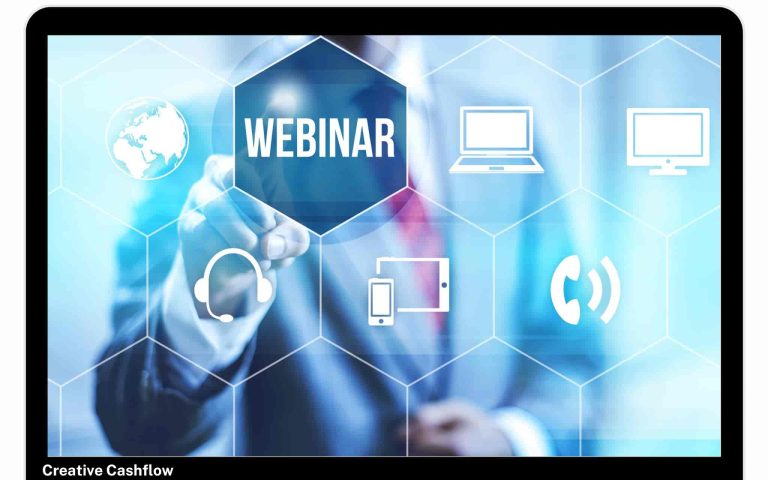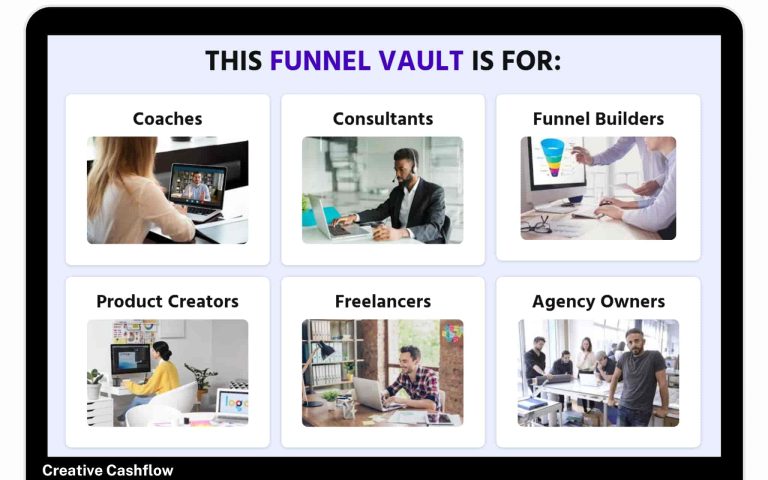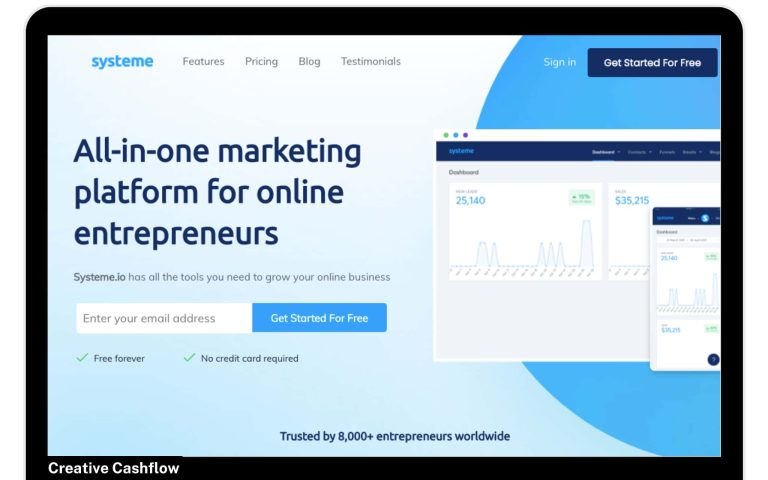How to make free landing page with systeme io

Introduction
Hi everyone, if you want to create a free landing page without spending money or writing a single line of code? You’re in the right place! Systeme.io is a powerful marketing platform that makes it easy to create and manage landing pages without requiring any coding knowledge or technical skills.
Whether you’re an entrepreneur, marketer, or just starting out, a landing page is essential for capturing leads, promoting offers, and growing your business. In this guide, I’ll walk you through the simple steps involved in creating a free landing page with Systeme.io in just a few minutes. Let’s get started!
What is Systeme.io?
Systeme.io is an all-in-one marketing platform designed to help entrepreneurs, marketers, and small businesses grow online. It simplifies the process of creating sales funnels, email marketing campaigns, and, of course, landing pages — without any coding or technical skills.
Why Use Systeme.io for Landing Pages?
- Free to Use — Get started without any upfront costs.
- Beginner-Friendly — Drag-and-drop builder with no coding required.
- Ready-Made Templates — Quickly customize professional designs.
- All-in-One Platform — Integrates with email marketing, automation, and sales funnels.
With Systeme.io, you can create and launch a high-converting landing page in just minutes. Now, let’s move on to the step-by-step process!
Table of Contents
Step 1: Sign Up for a Free Systeme.io Account
Remember before you can create a free landing page, you need to sign up for a free Systeme.io account. If you haven’t done so yet, follow these steps:

- Go to the Systeme.io website – Visit Systeme.io and click on the “Get Started for Free” button.

- Enter your details – Provide your email address and create a password.

- Confirm your email – Check your inbox for a verification email and click the link to activate your account.

- Log in to your dashboard – Once activated, sign in to your Systeme.io account to access the tools.

That’s it! You now have access to Systeme.io’s free plan, now you can start building your free landing page. And next, we’ll dive into how to use the landing page builder.
Step 2: Access the Landing Page Builder
Now that you’re logged into your Systeme.io account, it’s time to access the landing page builder. Follow these steps to get started:
- Go to the “Funnels” Section
- In your Systeme.io dashboard, find the “Funnels” tab on the left menu and click on it.
- Click the “Create” button to start a new funnel.

Choose Your Funnel Goal
The four options that you will see when you click on “Funnel” are the four main types of funnels that you can create in Systeme.io.
- Build an Audience: This is the simplest funnel structure. It includes only a Squeeze Page and an Opt-in Thank You Page. The purpose of this funnel is primarily to build your email list.
- Sell: A sales funnel is unique in that it comes preloaded with a customizable Order Form and Thank You Page. This funnel is used to generate sales for your business.
- Custom: This option allows you to create a funnel from scratch. You can choose the pages you want to include in your funnel and the order in which they will appear.
- Run an Evergreen Webinar: This option allows you to create a webinar that is always available to your audience. You can use this funnel to generate leads and sales.
Each of these funnels has a different purpose, and you can choose the one that best meets your needs.
Once you have chosen an option, you will be taken to the funnel builder. The funnel builder is a drag-and-drop interface that makes it easy to create and customize your funnel.
For this guide, select “Build an Audience” (this option helps you create a free landing page to collect leads).
Name Your Funnel
Click “Save” to continue.
Enter a name for your funnel (e.g., “My Free Landing Page”).
Select your default currency like the U.S. Dollar.

Now click on your funnel name you created, and it will then take you to the next step where you can start customizing your funnel whether you choose and edit an existing template or start from scratch.

whether you choose to edit an existing template or start from scratch. remember to add or select template for landing page as well for thank you page.
Step 3: Choose and Customize Your Free Landing Page Template
Now that you’ve created your funnel and added a new page, it’s time to select and customize your free landing page template. Follow these steps:
1. Choose a Landing Page Template
- After adding a new page, Systeme.io will show you a list of pre-designed templates.
- Browse through the options and select a template that fits your needs.
- Click “Select” to apply the template to your landing page.
Tip: Choose a simple and clean design that matches your brand and message.
2. Customize Your Free Landing Page
Once you’ve selected a template, you’ll be taken to the drag-and-drop editor. Here’s what you can do:
You can now add content to your free landing page. This could include text, images, videos, or a combination of all three.
- Edit Text – Click on any text section to change the headline, subheadings, and descriptions.
- Add Images – Replace the default images with your own or choose from free stock images.
- Change Colors & Fonts – Customize colors, fonts, and backgrounds to match your brand.
- Add or Remove Sections – Drag and drop elements like buttons, videos, or testimonials.
NOTE: When you’re adding content to your landing page, make sure to keep your target audience in mind. What kind of content will they find interesting and engaging? What information do they need to know?
3. Add Your Call-to-Action (CTA)
A call to action (CTA) is a button or link that tells your visitors what you want them to do. This could be to subscribe to your email list, download a free ebook, or purchase a product.
Your CTA should be clear and concise, and it should stand out from the rest of the page. Make sure to use strong action verbs, such as “SUBSCRIBE”, “DOWNLOAD YOUR EBOOK”, or “BUY NOW”.
A good landing page needs a strong CTA to encourage visitors to take action. Here’s how to add one:
- Click on the button element in your template.
- Edit the button text (e.g., “Get My Free Guide” or “Sign Up Now”).
- Link it to your signup form, freebie, or offer.
- Once you’re happy with the design, click “Save Changes” to ensure your progress is saved.
Up next, we’ll cover how to publish your free landing page!
Step 4: Optimize for SEO
Once you’ve created your free landing page, it’s important to optimize it for SEO (search engine optimization). This means adding keywords throughout your page in a natural way.
Optimizing a landing page for SEO is crucial for attracting organic traffic and improving conversion rates. A well-optimized landing page not only appeals to search engines but also provides a seamless user experience that guides visitors toward a specific action.
Key Strategies for Optimizing Landing Pages
- Keyword Research: Start by identifying relevant keywords that your target audience is searching for. Use tools like Google Keyword Planner or SEMrush to find keywords with good search volume and low competition. Incorporate these keywords naturally into your content, headings, and meta tags
- Compelling Content: Create high-quality, engaging content that addresses the needs and questions of your audience. Ensure that your content is informative and relevant to the keywords you are targeting. This not only helps with SEO but also keeps visitors on your page longer, reducing bounce rates.
- Mobile Optimization: Ensure your landing page is mobile-friendly. A responsive design improves user experience and is favored by search engines. Test your page on various devices to ensure it displays correctly.
- Page Speed: Optimize your landing page for fast loading times. Use tools like Google PageSpeed Insights to identify areas for improvement. A slow-loading page can lead to higher bounce rates and lower rankings.
- Clear Call to Action (CTA): Your landing page should have a clear and compelling CTA that directs users toward the desired action, whether it’s signing up for a newsletter, making a purchase, or downloading a resource. Make sure the CTA stands out visually.
- Internal Linking: Use internal links to guide visitors to other relevant pages on your site. This not only helps with navigation but also distributes page authority throughout your site, enhancing overall SEO.
- Analytics and Testing: Regularly monitor your landing page’s performance using tools like Google Analytics. A/B testing different elements (like headlines, images, and CTAs) can help you determine what works best for your audience.
On-Page SEO Elements: Optimize essential on-page elements such as:
- Title Tags: Include your primary keyword and keep it under 60 characters.
- Meta Descriptions: Write compelling descriptions that encourage clicks, ideally between 150–160 characters.
- Headings: Use H1 for the main title and H2/H3 for subheadings, incorporating keywords where appropriate.
You should also use headings and subheadings that include keywords. And don’t forget to include a meta description for your page. The meta description is a summary of your carrier that will appear in search results.
By implementing these strategies, you can significantly enhance the SEO performance of your landing pages, driving more organic traffic and improving conversion rates over time.
Step 5: Publish and Share Your Landing Page
Once you’ve optimised your landing page for SEO, it’s time to publish it. You can do this by clicking the “Publish” button in the Systeme.io editor.
Now that your landing page is ready, it’s time to publish it and share it with your audience. Follow these final steps:
1. Preview Your Landing Page
Before publishing, take a moment to preview your landing page:
- Click on the “Preview” button in the editor.
- Check how it looks on both desktop and mobile.
- Make sure all links, buttons, and forms work correctly.
Tip: If anything looks off, go back and make adjustments before publishing.
2. Publish Your Landing Page
- Click “Save Changes” in the editor.
- Go back to the funnel settings and select your landing page.
- Click the “Publish” or “Make Public” button (depending on your settings).
3. Get Your Landing Page Link
- Systeme.io provides a free subdomain (e.g., yourpage.systeme.io).
- If you have a custom domain, you can connect it in the settings.
- Copy your landing page URL and share it with your audience!
4. Share Your Landing Page
Now that your page is live, start driving traffic to it:
- Share it on social media (Facebook, Instagram, LinkedIn, Twitter).
- Send it to your email list to capture more leads.
- Use it in your ads (Facebook Ads, Google Ads, etc.).
Congratulations! You’ve successfully created and published a free landing page with Systeme.io.
Importance of Landing Pages in Your Marketing Strategy
Landing pages are one of the most powerful tools in your marketing strategy. Unlike a homepage, which is designed for general navigation, a landing page is built with a single purpose: to convert visitors into leads or customers.
A well-crafted landing page aligns perfectly with your ad campaigns, email promotions, or social media efforts. When potential customers click on an ad or link, they expect to find exactly what was promised.
If they land on a generic homepage, they might get distracted or frustrated. But a landing page eliminates distractions, guiding visitors toward taking one clear action—whether that’s signing up for a free trial, downloading a resource, or making a purchase.
Landing pages also provide valuable data. By tracking metrics like conversion rates, click-through rates, and bounce rates, you can analyze what’s working and optimize accordingly. A/B testing different headlines, call-to-action buttons, or form fields helps fine-tune your page for better results.
Additionally, landing pages improve your ad performance. Platforms like Google Ads favor highly relevant pages, which can lower your cost per click and increase ad rankings.
If you’re not leveraging landing pages, you’re likely leaving money on the table. They are essential for maximizing conversions and making your marketing strategy more effective.
Tips for Creating a High-Converting Landing Page
Creating a high-converting landing page requires a strategic approach. Here are some essential tips to help you design a landing page that captures attention and drives conversions:
- Clear and Compelling Headline: Your headline is the first thing visitors will see. Ensure it is clear, concise, and compelling. It should immediately convey the value of your offering and resonate with your target audience.
- Focus on a Single Call-to-Action (CTA): Limit distractions by having one primary CTA. Use action-oriented language that creates a sense of urgency, such as “Sign Up Now” or “Get Your Free Trial.” This helps guide visitors toward the desired action.
- Use Engaging Visuals: Incorporate high-quality images or videos that relate to your product or service. Visuals can enhance understanding and retention, making your message more impactful. Ensure they are relevant and complement your content.
- Keep It Simple: A cluttered page can overwhelm visitors. Use white space strategically to create a clean layout. Highlight key information and avoid unnecessary elements that could divert attention from your CTA.
- Social Proof: Include testimonials, reviews, or case studies that showcase the effectiveness of your offering. Social proof builds trust and credibility, making potential customers more comfortable taking action.
- Mobile Optimization: Ensure your landing page is mobile-friendly. With many users accessing the internet via smartphones, a responsive design will improve user experience and increase conversion rates.
- A/B Testing: Continuously test different elements of your landing page, such as headlines, images, and CTAs. A/B testing helps you determine what works best for your audience and allows for ongoing optimization.
By implementing these tips, you can create a high-converting landing page that effectively engages your audience and drives meaningful actions. Remember, the key is to focus on clarity, simplicity, and value!
Conclusion
So, there you have it! Those are the steps involved in creating a landing page in Systeme.io. By following these steps, you can create a landing page that is both informative and engaging.
Creating a professional landing page doesn’t have to be complicated or expensive. With Systeme.io, you can build, customize, and publish a high-converting landing page for free—without any coding skills!
Quick Recap:
- Sign up for a free Systeme.io account to get started.
- Access the landing page builder and create a new funnel.
- Choose and customize a template to match your brand.
- Add a strong call-to-action (CTA) to encourage signups.
- Publish and share your landing page to start collecting leads.
Now it’s your turn! Take action today and create your free landing page with Systeme.io.
Have any questions or need help? Drop a comment below! I’d love to hear about your experience.
“Thanks for reading! I hope you enjoyed this post. What are your thoughts on this topic? Let me know in the comments below. Until next time!”
FAQs (Frequently Asked Questions)
1. Is Systeme.io really free to use?
Yes! Systeme.io offers a forever-free plan that allows you to create and publish landing pages without any cost. You can also access other marketing tools like email automation and sales funnels.
2. Do I need any coding skills to create a landing page?
Nope! Systeme.io has a drag-and-drop builder, so you can create a landing page easily without writing any code.
3. Can I use my own domain for the landing page?
Yes! While Systeme.io provides a free subdomain, you can also connect your own custom domain if you prefer.
4. How do I collect emails from my landing page?
You can add an email opt-in form to your landing page, which integrates directly with Systeme.io’s email marketing system to collect and manage leads.
5. Can I edit my landing page after publishing it?
Absolutely! You can go back and make changes anytime by accessing your funnel and editing the page in the Systeme.io builder.
Get more insights from me.
- If you love my content, you can Buy Me a Coffee here.
- Want to read more from me: subscribe to my newsletter, Creative Cashflow Newsletter.
- Want a system to manage your Finances: grab my 50/30/20 Savings Rule Zero Based Budgeting Notion Template
- Tool I personally recommend: System.io , CreativeFabrica & VidIQ
- Check My Social media profile: Twitter, YouTube & Bento.me Profile
- Learn more about how to make free landing page with systeme io
“Please note: This post may contain affiliate links. If you purchase a product through one of these links, I may earn a small commission at no additional cost to you. Thank you for your support!”



